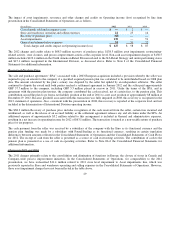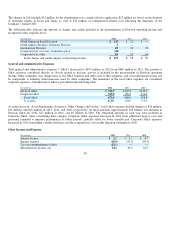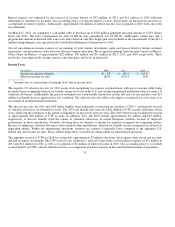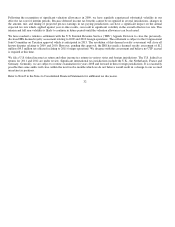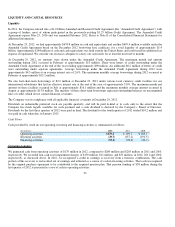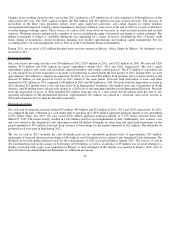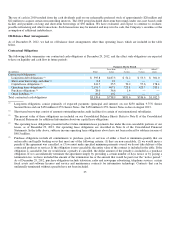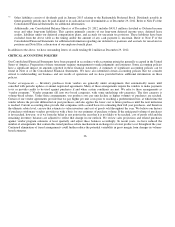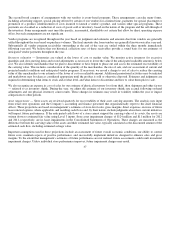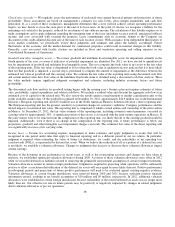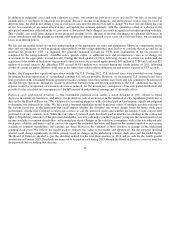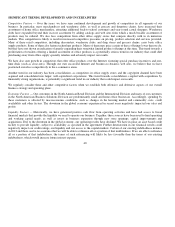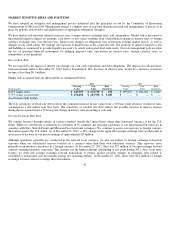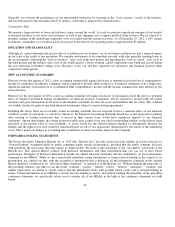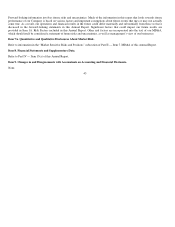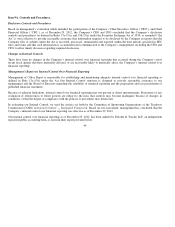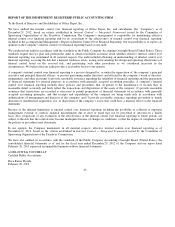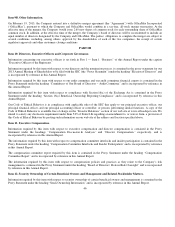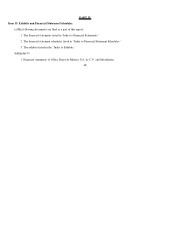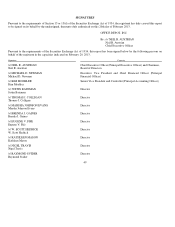Office Depot 2012 Annual Report Download - page 41
Download and view the complete annual report
Please find page 41 of the 2012 Office Depot annual report below. You can navigate through the pages in the report by either clicking on the pages listed below, or by using the keyword search tool below to find specific information within the annual report.
In addition to judgments associated with valuation accounts, our current tax provision can be affected by our mix of income and
identification or resolution of uncertain tax positions. Because income from domestic and international sources may be taxed at
different rates, the shift in mix during a year or over years can cause the effective tax rate to change. We base our rate during the yea
r
on our best estimate of an annual effective rate, and update that estimate quarterly, with the cumulative effect of a change in the
anticipated annual rate reflected in the tax provision of that period. Such changes can result in significant interim reporting volatility.
This volatility can result from changes in our projected earnings levels, the mix of income, the impact of valuation allowances in
certain jurisdictions and the interim accounting rules applied to entities expected to pay taxes on a full year basis, but recognizing
losses in an interim period.
We file our tax returns based on our best understanding of the appropriate tax rules and regulations. However, complexities in the
rules and our operations, as well as positions taken publicly by the taxing authorities, may lead us to conclude that an accrual for an
uncertain tax position (“UTP”) is required. We generally maintain accruals for UTPs until examination of the tax position is
completed by the taxing authority, available review periods expire, or additional facts and circumstances cause us to change ou
r
assessment of the appropriate accrual amount. During the third quarter of 2011, following closure of certain tax audits and the
expiration of the statute of limitations on previously open tax years, we reversed approximately $66 million of UTPs and a related $32
million of accrued interest. An additional UTP accrual of $15 million was reversed during the fourth quarter of 2011 following
closure of certain tax audits. Matters could arise in the future that could result in additional tax and interest expense or UTP accruals.
Further, the Company has significant operations outside the U.S. During 2012, U.S. deferred taxes were provided on one foreign
investment because repatriation of accumulated earnings was at least possible. However, no incremental U.S. deferred taxes have
been provided on the remaining foreign operations because earnings from those entities have been and will continue to be reinvested
into the foreign operations. Should we decide to distribute earnings from our foreign operations to the U.S., additional income tax
expense would be recognized, or valuation allowances reduced, for the income tax consequence of the anticipated distribution and
possibly for the calculated tax consequences of the full amount of undistributed earnings, net of allowable offsets.
Preferred stock paid-in-kind dividends — Our redeemable preferred stock carries a stated dividend of 10%, subject to future
decreases in certain circumstances, and allows for payment in cash or an increase in the preferred stock’s liquidation preference as
directed by the Board of Directors. The valuation for accounting purposes of the dividend paid in-kind requires significant judgment
to determine the estimated fair value. We have used a binomial simulation model to measure values of multiple possible outcomes o
f
the various provisions in the agreement that could impact whether the dividend rate would change based on future stock price
performance, whether the Company would issue a notice to call the preferred shares and whether the holders would convert thei
r
preferred stock into common stock. While the fair value of preferred stock dividends paid in-kind has no standing in the contractual
rights to liquidation preference of the preferred shareholders nor any cash impact on the Company, it impacts the measurement of net
income available to common shareholders and earnings per share. Changes in the valuation assumptions such as the risk adjusted rate,
stock price volatility and time to call or convert can impact the estimated fair value and therefore the amount reported as net income
available to common shareholders and earnings per share. However, the valuation is most sensitive to changes in the underlying
common stock price. We believe the model used to estimate fair value is reasonable and appropriate, but the reported dividend
amount could change significantly in future periods based on changes in the underlying common stock price and the model inputs.
The Board of Directors decided to pay the dividend in-kind for the first three quarters of 2012 and in cash for the fourth quarte
r
amount due in January 2013. Dividends are expected to be paid in cash during 2013, though the Board of Directors assesses available
data quarterly before making that decision.
39


